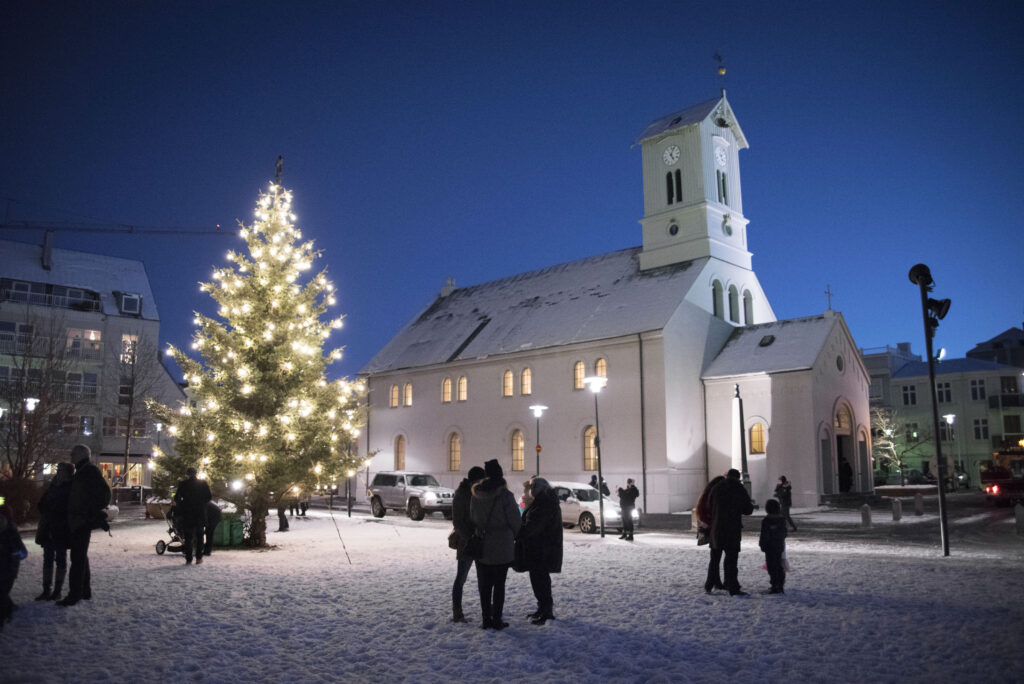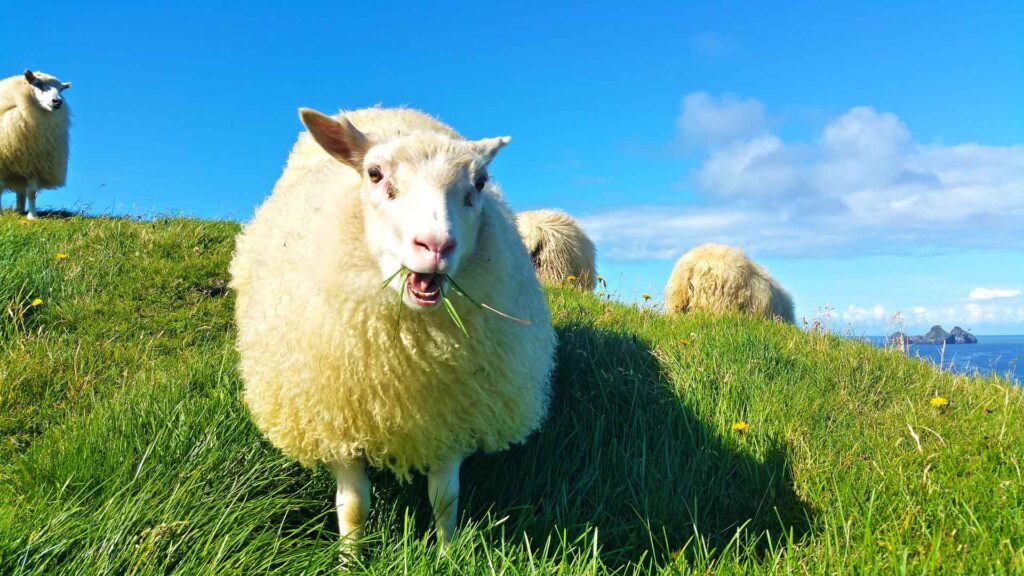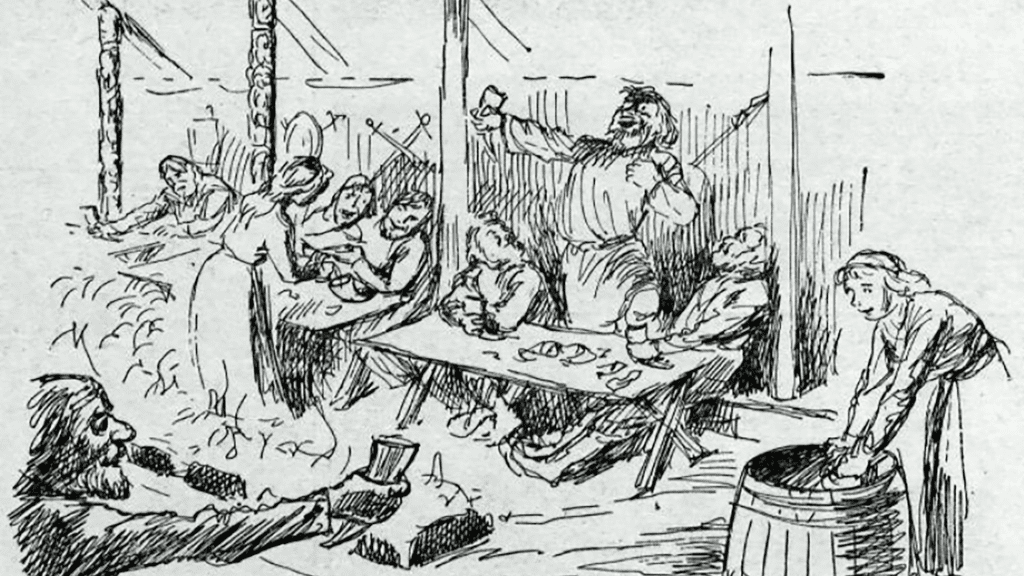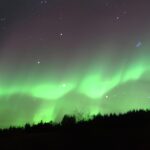Mörsugur is the 3rd month of the winter season. It always begins in the 9th week of winter, on a Wednesday between December 20 and 27, around the Winter Solstice and Christmas. Today it is thus, technically the Yule Month
Therefore, it is opposite Sólmánuður, the 3rd month of the summer season. It always begins on Monday in the 9th week of summer around the Summer Solstice and Midsummer between June 18 and 24. Midsummer on June 24 is an ancient solstice festival like the Christian Christmas.

Nordic and Northern European people used the Norse calendar until Christianity took over. However, Icelanders kept using their calendar version, especially the names of the months, until the 18th century. Icelanders still use a few month names, especially þorri, góa, and harpa. The first days of those months are the husband’s day, the woman’s day, and the first day of summer, respectively.
You can read all about the calendar here. Then we have posts about individual months:
What Does Mörsugur Mean?
There is no recorded explanation of the name Mörsugur, and not everyone agrees on how it should be understood. It is comprised of the words mör-(fat) and sugur(to suck), which is understood as “to suck fat.”
But even if we know what it means, we still need to learn its meaning. Did it mean this was the time of year when the fat was sucked off cattle and people (that is, starvation)? It doesn’t fit, however, because this is the third month of winter after the slaughtering season. Farms should still be filled with food. There should also be enough hay left so the animals shouldn’t be starving. The food for people and animals had to last through mörsugur and then þorri, góa and einmánuður. All the way until the grass turned green again with the arrival of summer in the month of harpa.
The most likely explanation for this name is probably that it is the darkest time of year. The winter was literally sucking the light from people. That is, running on people’s light reserves, which were candles made from tallows in the olden days. It could thus be that the last Yule Lad to come down from the mountains before Christmas, Candle Stealer, was, in fact, the darkness. Darkness is what steals the light which shines from the tallow candle, so to speak.
Ram Month

Mörsugur was also called hrútmánúður or hrútmál (Ram month), as during this period, the ewes are fertile. Reverend Björn Halldórsson wrote in his book Atli about mörsugur:
“Mörsugur is the month that begins closest to the winter solstice when the sun enters the sign of Capricorn. In the 10th week of winter, people release rams to the ewes unless they have enough hay and expect a good spring, then a week earlier.”
Therefore, hrútmánuður describes farming practices rather than a proper month name. It’s not the only month with one or two names explaining the farmer practices of that month. Other examples are heyannir and eggtíð.
Christmas Month
Mörsugur has also been called jólamánuður, or Christmas Month, which probably came about the same way as hrútmánuður. It was named that because of its connection with the beginning of the Christina Christmas celebrations rather than its proper name.
It’s understandable since it always starts on a Wednesday in the period December 20-27. Therefore, it begins around the time Christians put down as the date of the Christian Christmas. But the old calendar is not based on the days of the month but on weeks and days of the week, so mörsugur cannot start precisely on the day of the Church calendar every year.
Christmas Before Christianity
It is unknown when Yule was generally celebrated before Christianity. In the Icelandic sagas, Yule seems to have had no other purpose than to hold a three-day feast of food and drink in a short day. It is not related to religion or any secular practice, and it is not certain that they were always held at the same time each year.

There is no mention of the timing of Yule. But in one place, it is mentioned that the Christians brought the festival forward by some days. It must be considered reasonably certain that Yule did not follow any specific date because the Christmas dates used today were the decisions of the Christians. They connected the Church Year to the Roman Julian calendar, based on numbered months and the numbering days within each month. Unlike the old Icelandic calendar, which is based on weeks and days of the week, they also used a 30-day counting of months. This resulted in the year not having enough days. To correct the error, extra days were inserted into each season to align with the sun’s course.
If Yule was always celebrated on the same day according to the two-season calendar, it would have been in a particular week of the winter semester. If it was even more accurate, it would have started on a specific day of the week in the relevant week. It must be considered likely that a particular day of the week was considered so that they fit in with general farm work and workers’ holidays. But information on what period this was and if it was of any particular importance has not survived.








